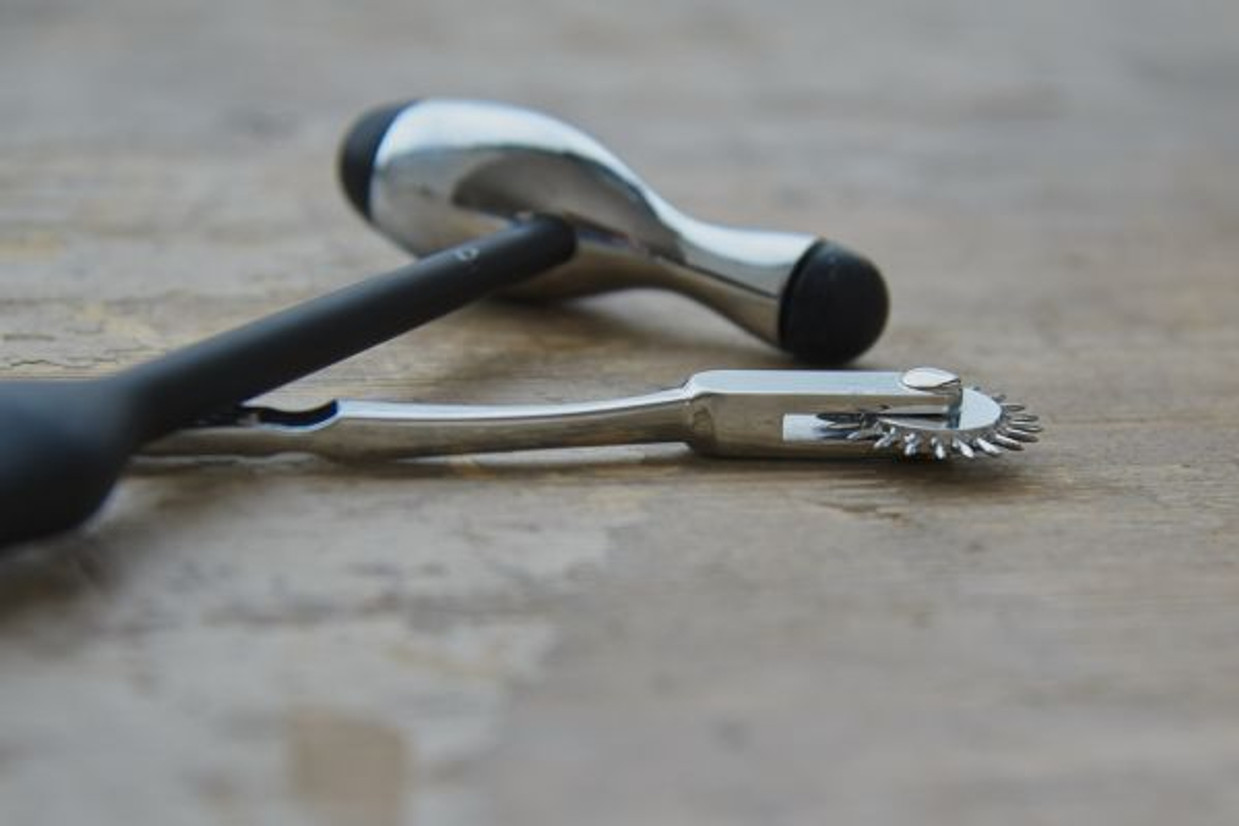What Is a Wartenberg Pinwheel and What Is It Used For?
In the world of medical examinations and diagnoses, precision and accuracy are paramount. However, these attributes should always be coupled with a patient-focused approach to enhance the overall care experience. One tool that embodies these principles is the Wartenberg pinwheel, a simple yet effective medical device with multifaceted uses. If you’re wondering what a Wartenberg pinwheel is and what it is used for, read this informative blog, where we’ll dive into all the details.
What Is a Wartenberg Pinwheel?
Chances are, if you've spent time in a medical setting or are familiar with sensory testing, you've seen a Wartenberg pinwheel, though you might not have known its name. This small device, resembling a miniature pizza cutter, has an array of evenly spaced sharp pins that gently roll against the skin.
Initially created by Robert Wartenberg, a German neurologist, the pinwheel was designed to test the degree and quality of sensory perception in certain neurologic conditions. Today, it is a go-to tool in various medical settings. Its simple, nonthreatening design helps to relax patients and can even deliver a measured level of sensation to gauge nerve and skin health.
Medical Applications
The Wartenberg pinwheel becomes a powerful tool for testing and mapping sensory perception in the hands of skilled professionals. For instance, consider the need to assess the nerve function of a patient with diabetes. By running the pinwheel over various areas of the skin and observing the patient's responses, clinicians can pinpoint any loss of sensation, which may indicate nerve damage.
Pinwheels may be synonymous with chroniclers of sensory loss in cases of neurological impairments. However, they are also essential for assessing the body's autonomic nervous system. When used to check reflexes and sensitivity, the pinwheel assists in diagnosing conditions such as neuropathy or even certain spinal cord injuries.
Benefits for Medical Professionals
For neurologists and other health practitioners, the Wartenberg pinwheel provides a high degree of precision. This accuracy is crucial in diagnosing the growing number of sensory neuropathies and other conditions. The detailed sensory mapping it enables can sometimes make the difference between two similar diagnoses with drastically different prognoses.
The non-intimidating design of the pinwheel is particularly beneficial in medical settings where easing patient anxiety and discomfort is crucial. The gentle rolling motion and the pinwheel's effectiveness in assessing the patient's sensory systems can lead to a more informed and comprehensive diagnosis, ultimately improving patient care.
Demonstrative Examples
A step-by-step guide on using the Wartenberg pinwheel could greatly enhance its understanding and application in various medical scenarios.
- Before starting, ensure the Wartenberg pinwheel is clean and sanitized.
- Gently roll the wheel across the patient's skin, applying light pressure.
- Observe the patient's reaction to assess sensitivity.
- Systematically use the pinwheel on different areas of the body.
- Communicate with the patient throughout to ensure comfort and understanding.
- After use, clean the pinwheel thoroughly.
Now that you have an overview of a Wartenberg pinwheel and its uses, you can implement this tool into your practice. In an age where technology and data are increasingly pivotal, it's refreshing to unearth the value of a simple, tactile, and patient-centered tool. Check out Cascade Health Care’s selection of medical equipment today, including Wartenberg pinwheels, percussion knee hammers, and other essential tools. For the modern medical professional, recognizing and incorporating these instruments into practice can elevate the quality of care and the patient experience.
Recent Posts
-
Positions for Out-of-Bed Laboring During a Home Birth
For midwives, doulas, and other healthcare professionals who attend home births, facilitating a safe
-
5 Applications for Dopplers in Endocrinology
Doppler ultrasound technology has transformed diagnostic capabilities across multiple medical specia



